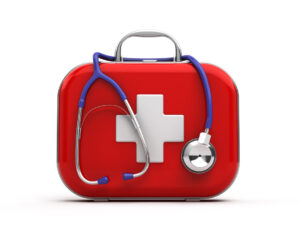
When it comes to emergencies, having a basic understanding of first aid can make a significant difference. Whether you find yourself at home, work, or in a public space, knowing how to respond promptly can be crucial. In this quick guide, we’ll cover the fundamentals of first aid for beginners, providing essential information that can empower you to act effectively in various situations.
Understanding the ABCs of First Aid
Airway: The first step in any emergency situation is to ensure an open airway. If someone is unconscious, check for any obstructions in their mouth or throat. Tilt the head backward and lift the chin to keep the airway clear. This simple action can help facilitate breathing.
Breathing: After ensuring an open airway, check for signs of breathing. Place your ear close to the person’s mouth and nose, look for chest rise and fall, and listen for breath sounds. If the person is not breathing, start CPR (cardiopulmonary resuscitation) immediately.
Circulation: Once you’ve addressed breathing, check for a pulse. If there’s no pulse, initiate chest compressions as part of CPR. The combination of rescue breaths and chest compressions helps maintain circulation until professional help arrives.
Dealing with Common Injuries
Cuts and Scrapes: For minor cuts and scrapes, clean the wound with mild soap and water. Apply an antiseptic ointment and cover it with a sterile bandage. If bleeding is severe, use a clean cloth or bandage to apply direct pressure and elevate the injured area.
Burns: For minor burns, cool the affected area under cold, running water for at least 10 minutes. Avoid using ice. For more severe burns, cover the area with a clean, dry cloth and seek medical attention promptly.
Fractures: If you suspect a fracture, immobilize the injured limb with a splint or by securing it to the adjacent uninjured limb. Avoid moving the injured area unnecessarily. Seek professional medical assistance as soon as possible.
The importance of first aid training lies in its capacity to empower individuals, instill confidence, and save lives by equipping them to respond effectively in emergencies until professional help arrives.
Recognizing Signs of Medical Emergencies
Heart Attack: Common signs of a heart attack include chest pain or discomfort, shortness of breath, and pain or discomfort in the arms, back, neck, jaw, or stomach. If you suspect a heart attack, call emergency services immediately.
Stroke: Remember the acronym FAST—Face drooping, Arm weakness, Speech difficulty, Time to call emergency services. If someone exhibits these signs, seek immediate medical help.
Conclusion
Equipping yourself with the basics of first aid can empower you to respond effectively in emergencies. Remember, quick and confident action can be a lifesaver. Consider taking a certified first aid course for a more in-depth understanding of these principles and gain the confidence to handle a variety of situations. Your preparedness could make all the difference in the world.












